It’s been a while since our last Telegram Chess Tournament update. In the first round I played quite an excellent game, and won a very convincing game, where the computer agreed that I was pretty much Bobby Fischer on steroids.

Although even for that game the Chess.com analysis tool was not as impressed.

For our second round game, this time against Holly_Falcon03, the engine tells me that I don goofed four times in a twenty five move game. This time Chess.com and Lichess agree on that.
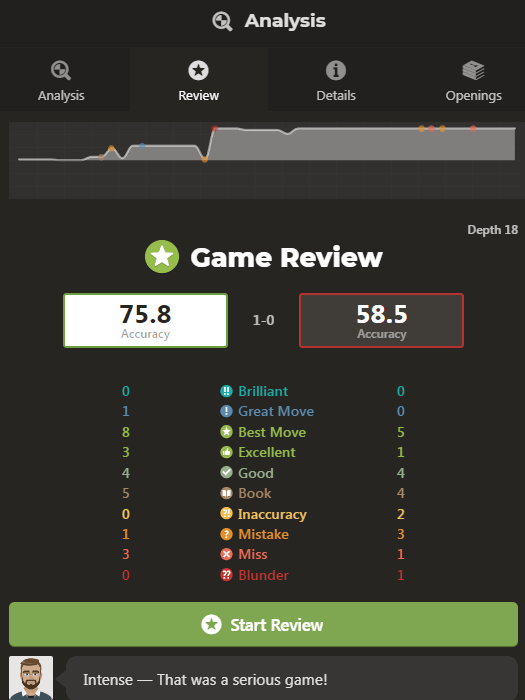

And Chess.com has demoted me to an 1800 rated player.
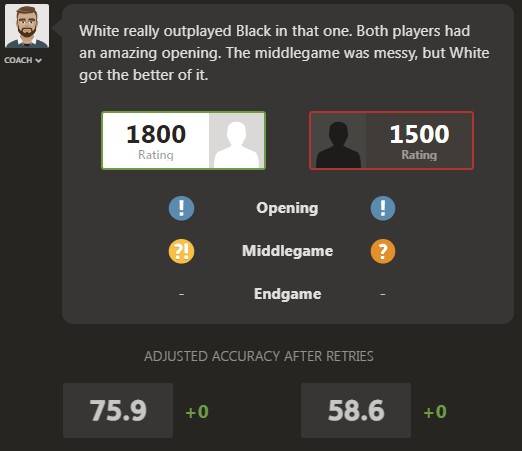
The reason I say all this before getting to the game is to reinforce the point that engine analysis should always be taken with a grain of salt. Even for the absolute highest level of play, there are some moves that are “blunders” because the engine found some bizarre move that somehow works, and even Magnus Carlsen would have missed that every time. Occasionally the engine does point out real blunders that a decent player should have seen, but often it’s merely an idle curiosity.
This is all a roundabout way of saying that, frankly, I feel that I played very well. And without much further ado, here’s the game.
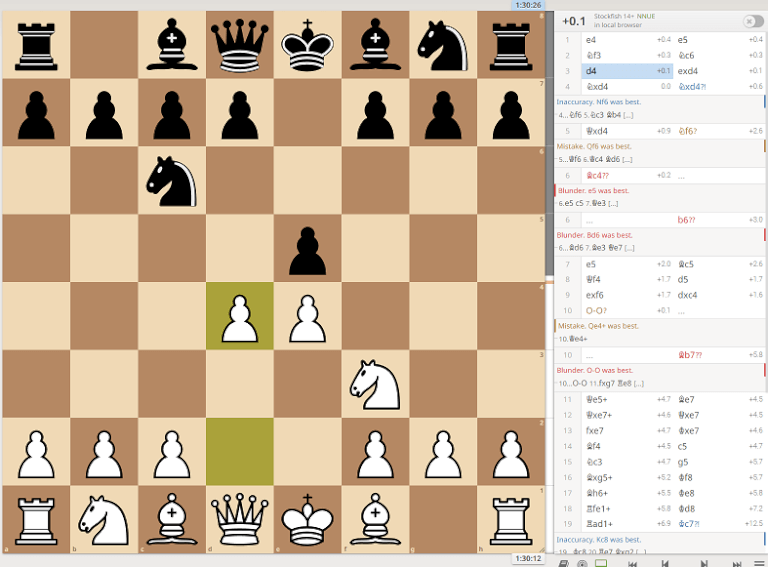
The game started with a very standard king’s pawn opening. Normally I’d play the Ruy Lopez in these situations, but I decided to mix it up this time and play the Scotch.

This decision had already worked out very well for me when Falcon exchanged the knights, letting me develop the queen and get control of the center. It went even better for me after he developed the knight. I looked at e5, the best move, but couldn’t quite figure it all out after moves like Qe7 and d5. I felt that it probably works, but I didn’t want to potentially throw away the game in the opening by risking it.
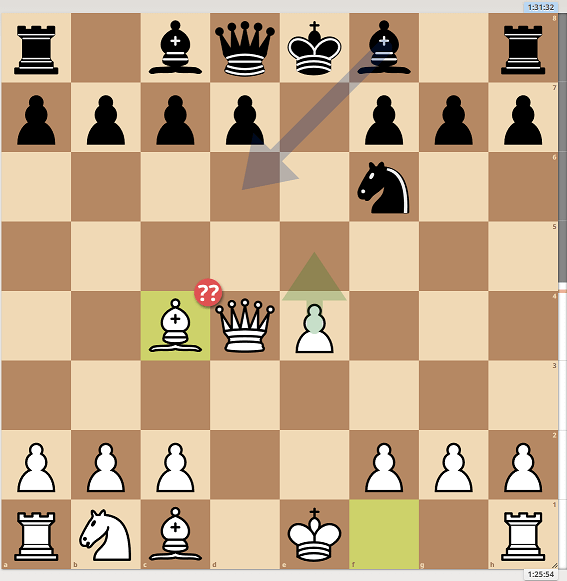 However, after he played g6 I decided to go for e5 because of the added tactics with potential queen checks picking up the rook.
However, after he played g6 I decided to go for e5 because of the added tactics with potential queen checks picking up the rook. 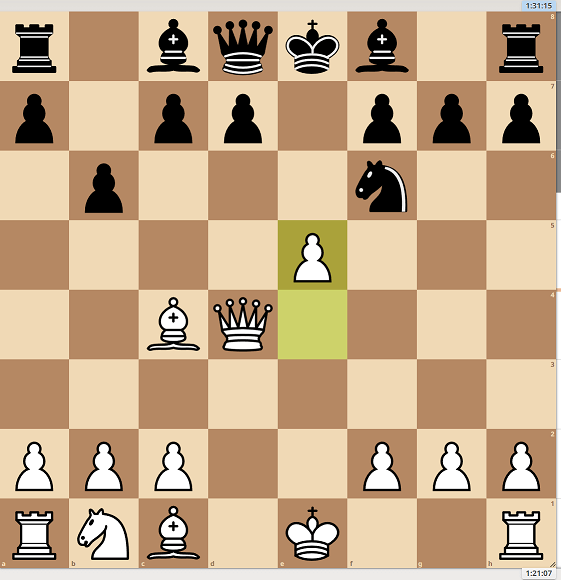
After Falcon played the natural Bc5, I was calculating Qd3, Qd1, and Qf4. Black is threatening some nastiness on f2 with Ng4 and the bishop on c5.
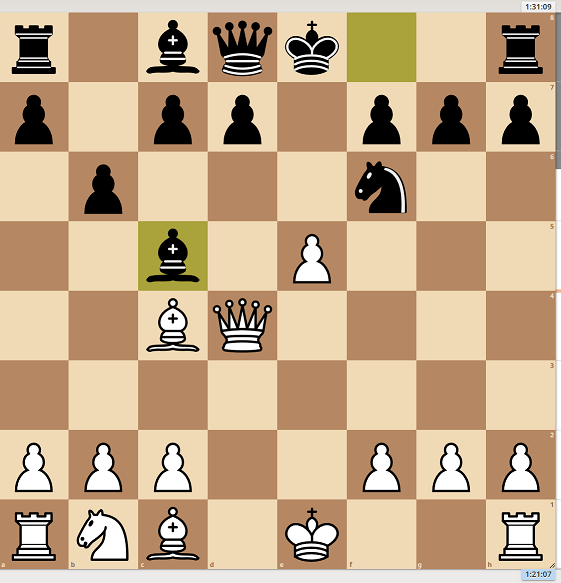
But it’s still a very complicated position, especially with both kings uncastled, and lots of tricky moves for both sides in this position. Falcon played d5, which I was expecting. I was considering Bb5+, but I realized that he could play either Bd7 or Nd7, and then he has more development than I do. In contrast, if I take the knight on f6, then I at least ruin blacks pawn structure, and cannot be down a pawn after he takes my bishop on c4.

This is especially true because I realized before the capture of the knight on f6 that I can simply castle in the below position, because Black cannot take the pawn on f6 with his queen after castling.
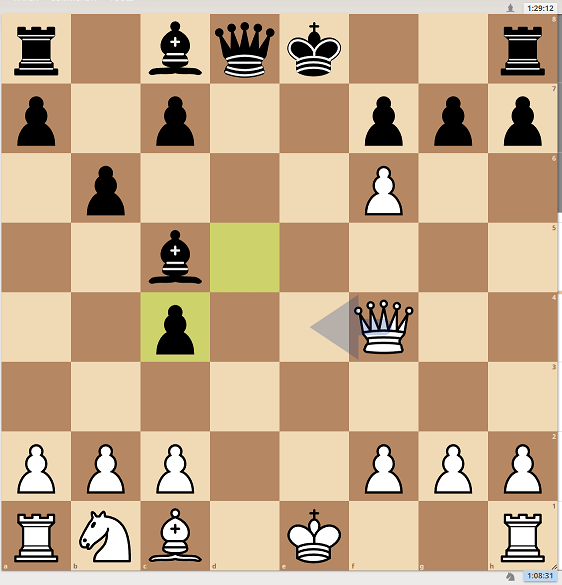
The computer says that castling was a mistake for complicated reasons and spits out some long lines that I’ve ignored. As a challenge to the reader, can you figure out why black cannot take the pawn on f6 with his queen in the below position? Try to figure this out before scrolling down.
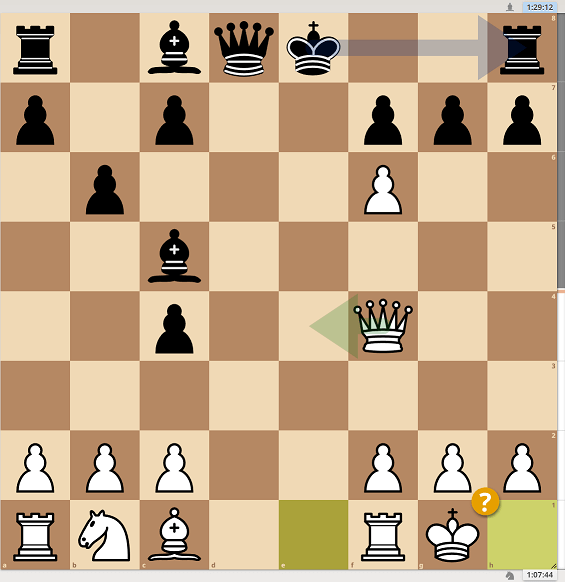
The simple queen check on e4 now does win the rook. Be6 no longer protects the rook, because the queen is off the back rank. Furthermore, the castled king and rook are defending f2 from any counterplay, so this would simply win a rook.
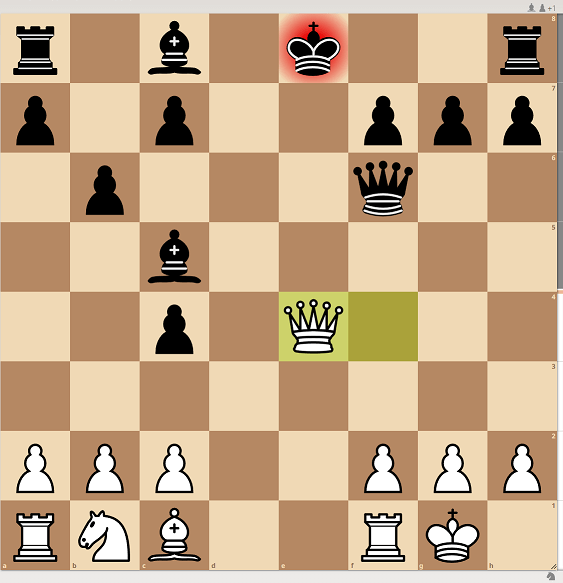
Sideline, the rook on a8 is lost.
I expected either fxg6, or castling, neither of which look all that good for black. However, my opponent played a terrible blunder with Bb7. I saw the tactic instantly, but quickly triple checked to make sure that I was winning.
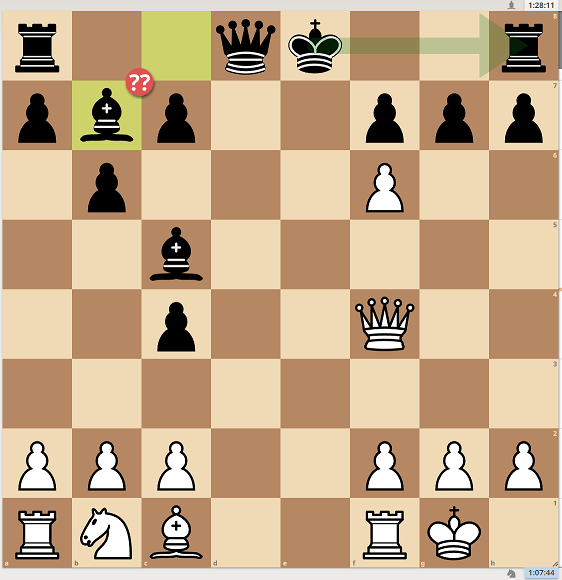
Qe5+, the winning move. If Kf8, then fxg7+ doesn’t just win the rook with check, but checkmates in 2.

Instead, my opponent played Be7. I considered playing something fancy, but finally decided to just capture the bishop with the queen, forcing a queen trade, and now being up a piece for a pawn in an easily winning position.
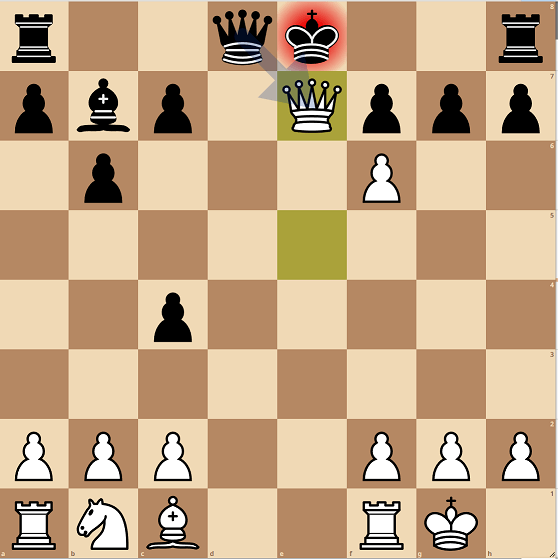
The rest of the game can be blitzed through. I’m up a piece, with no serious problems. To his credit, Falcon tried to create some problems with the move g5. Unfortunately, the pawn can be captured with check. If that weren’t the case, then capturing the pawn would lose a piece, due to Rg8 threatening a terrible check and windmill tactic on g2. But as it is, this just drops a pawn. Actually, looking at it now, I see that I could have played Re1+, which takes much of the poison out of the windmill tactic. Still, it was a good attempt.
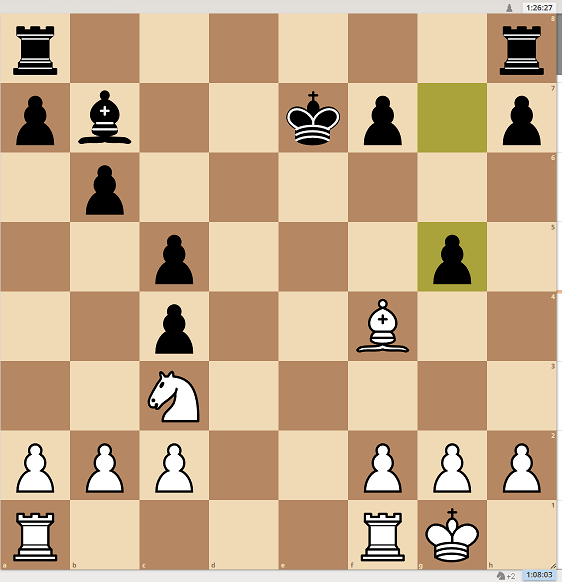
I told myself to bear down and not rush any moves at the end here. I’m clearly winning, and considered a prophylactic move such as g3. However, that can be played at any time, and I calculated Re7, followed by Rd7, and saw that this created enormous problems for black.

After a few moves we arrived here, with me having a mate in 1 that I totally missed. In my defense, I was focused on shutting down his counterplay, and taking the free bishop on b7 accomplishes that, in addition to putting me up two pieces. Can you spot the mate in 1 that I missed?
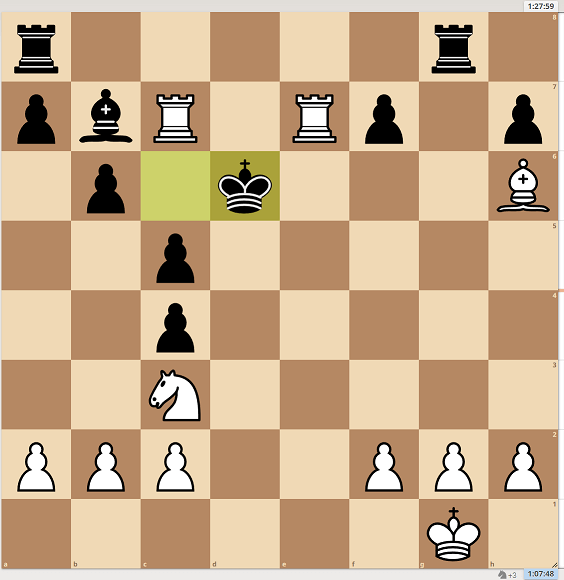
The game ended with a pretty rook and bishop mate just a few moves later.
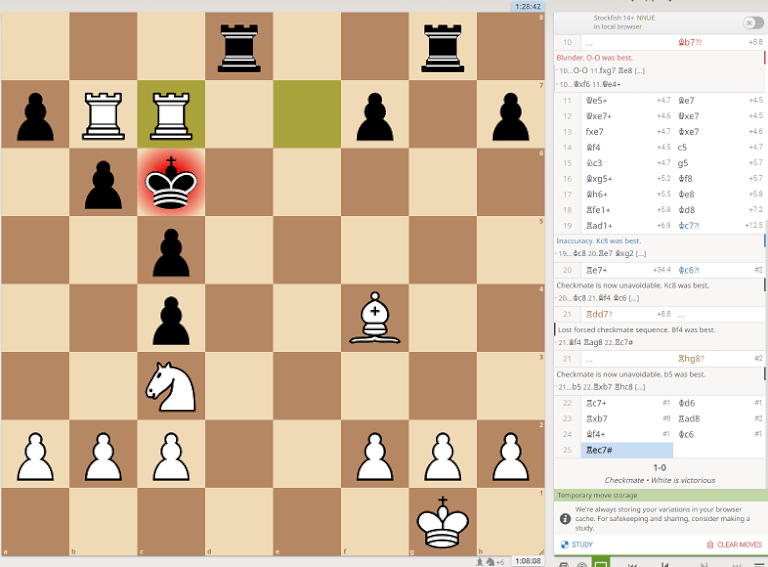
Honestly, there’s not that much to say about this game. One blunder can very much end a chess game, especially at longer time controls where it’s easy to take your time and play the right moves to prove your advantage. I do think that I could have been more aggressive in the opening, but I’m quite happy with the way I played, and thankful to Holly_Falcon03 for the game. Now, with a +2 score I’m looking forward to the next round, where I believe I will be paired up with another player with a +2 score.















Here’s my review: we need more Horsey-guy action !